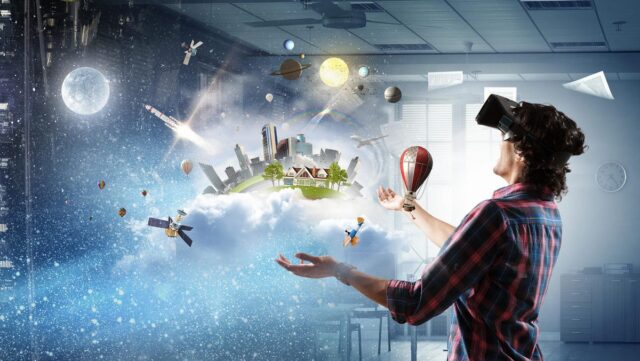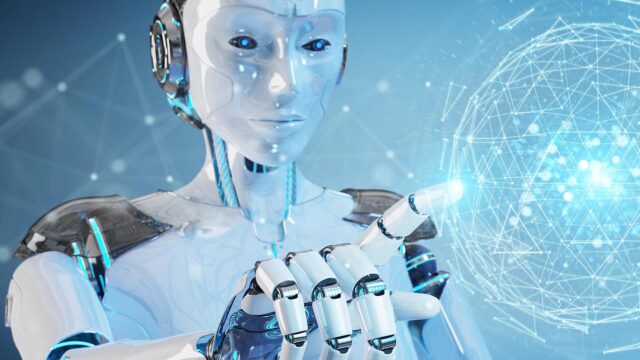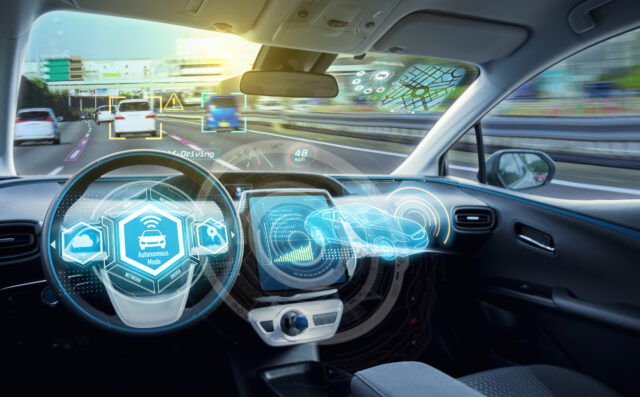
Have you ever wondered what the future could look like? From artificial intelligence to robotics, amazing new technologies are emerging every day, and it’s time to begin familiarizing yourself with them. In this blog, we’ll explore some of these cutting-edge advancements and what they could mean for our world. You won’t want to miss out!
The world of technology is constantly changing and evolving, with new trends and advancements emerging every day. Artificial intelligence, 5G networks, and virtual reality are some of the technologies that are reshaping how our lives and businesses operate. As these new trends enter the market, it’s important to stay informed so you can take advantage of the opportunities they present. Companies like InventHelp provide invaluable resources to help entrepreneurs get up to speed on the latest technological advancements. With their expertise, you’ll be able to stay ahead of the competition and capitalize on the opportunities available in an ever-evolving digital landscape.
Artificial Intelligence

Artificial Intelligence (AI) is a branch of computer science that studies the ability of machines to perform tasks usually associated with human intelligence, such as image recognition, problem-solving, and natural language processing. It has been around since the 1950s but has recently been gaining attention due to its potential applications in various areas of our lives.
The development of artificial intelligence technologies can be divided into three generations. The first generation was the development of expert systems – programs that allow computers to interpret structured data and make decisions based on data provided by human users. This was followed by the second-generation AI which saw machines being able to learn from prior experiences and make decisions accordingly.
Current AI technology is almost entirely focused on deep learning; this involves using large sets of data for machine learning algorithms which enable an artificial neural network to recognize patterns and classify objects correctly using only input data.
One area where AI is already having a significant impact is in the field of automation, where it is being used to streamline processes and reduce costs. AI-powered chatbots and virtual assistants are becoming increasingly common in customer service, while machine learning algorithms are being used to optimize everything from supply chains to financial portfolios. In the future, artificial intelligence technologies could also revolutionize healthcare, with the potential to analyze vast amounts of data to improve diagnoses and treatments. As AI technology continues to advance, it is important for businesses to stay informed and explore the potential benefits it could bring to their operations.
Augmented and Virtual Reality

Augmented and virtual reality are two emerging technologies that are revolutionizing how we interact with the world, providing incredibly immersive experiences for users. Augmented reality (AR) is a technology that superimposes digital content onto physical objects, allowing users to see the real world with digital enhancements. Virtual reality (VR) on the other hand, completely immerses users in a virtual environment, completely separating them from the real world.
At the moment, AR and VR are both experiencing a great deal of innovation and experimentation in many different fields such as education, entertainment, marketing, and more. In education for example, augmented and virtual reality can be used to provide engaging learning experiences for learners of all ages through interactive simulations and immersive environments that are engaging yet educational. In entertainment meanwhile, AR/VR can be used to create thrilling games where users explore alternate realities while at home.
And in marketing, they can help companies create more personalized campaigns for their target audiences through interactive experiences that get people engaged with products or services in an exciting new way.
Robotics

Robotics is one of the most exciting and fast-evolving areas of emerging technology, allowing robots to break out of mundane tasks and fill more complex roles in society. Advances in computer vision, AI, motion sensing, sensors, and actuators help bring robotic solutions to life. Autonomous robots such as self-navigating cars, cleaning robots, drones and robots that can interact with people are giving manufacturers a powerful new set of tools to increase productivity and create innovative products.
Robots are being developed for applications ranging from factory automation to special-purpose medical instruments to smarter vacuum cleaners that clean up after themselves. With the help of sensors and cameras, these machines are able to detect their environment better than their human counterparts ever could. They can be programmed with task-specific functions or programmed for general intelligence that could enable them to process new data or make decisions about how best to perform a particular task.
Autonomous Vehicles

Autonomous vehicles, or “driverless cars” as they are sometimes known, have been the subject of much experimentation in recent years. Autonomous vehicles use a variety of technologies – including sensors, cameras, and artificial intelligence (AI) – to navigate safely around their environment without the need for human intervention.
Autonomous cars are still in their infancy, but they provide an exciting glimpse into what future transportation technology might look like. At present, several companies are developing self-driving car technology in hopes of creating more comfortable, efficient, and dignified transportation options for people around the world.
The autonomous vehicle industry is still nascent and rapidly changing with new technology developments on a regular basis. Furthermore, there is also debate over the ethical standards surrounding autonomous vehicle systems as well as potential legal issues related to insurance coverage and liability should an accident occur.
Blockchain

Blockchain is an emerging technology that allows for information or digital assets to be securely stored and exchanged using distributed databases, which are often referred to as ledgers. It is a public, shared system that is somewhat self-managed by a network of computers. This technology has applications ranging from cryptocurrency (Bitcoin) and digital payments all the way to tracking shipments and contracts.
In essence, Blockchain allows for data-sharing across computers and networks with multiple participants. Each one of these participants is granted access control over viewing, editing, or deleting data. In most cases, each participant has a single role; however, there can be several roles depending on the setup of the Blockchain system. Moreover, it can also allow for consensus mechanisms where any changes need to be agreed upon by the majority of participants before they can be introduced or implemented.
Quantum Computing

Quantum computing is a revolutionary approach to building computers that take advantage of certain properties of quantum mechanics. By manipulating qubits (the quantum version of the classical bit) instead of traditional transistors, a quantum computer can solve certain problems much faster than any ordinary computer.
At its root, quantum computing is based on the idea of entanglement – two particles interacting with each other as if they were one. This means that qubits can be manipulated in ways that are very different from the ones used by traditional computers. As such, complex operations can be done in a single step without relying on massive amounts of power or processing time.
Of course, this kind of advanced computing power doesn’t come for free – it requires high levels of precision and carefully-designed hardware and software to achieve feats like performing quantum simulations or factoring large numbers quickly. Despite these challenges, researchers in government and industry are making progress rapidly; some expect commercial quantum computers to be available within the next few years.
Conclusion
We can only begin to imagine the possibilities of new and emerging technologies. In a continuously evolving world, new possibilities for applications open up in multiple fields, ranging from healthcare to robotics, from agriculture to manufacturing, and from artificial intelligence to remote observation.









